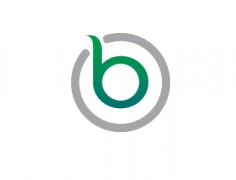Every newer technology has loopholes that draw multitudes of Spammers. The newest Spam technique on the scene is hiding text and URL gateways using CSS (Cascading Style Sheet) methods.
More frequently we are finding top listed sites owned or controlled by SEO and Web Development companies using this technique.
There are many ways to hide text and links using CSS and it is seems to be running completely unchecked by the major SE’s at this time. Up to now the search engines haven’t been able to parse CSS files and combine that information with the page code to determine if spamming techniques were being used.
Most methods deploy a separate attached CSS file and use “hide” terms, such as:
keyword keyword
This morning I was doing a GOOGLE search for “web development pricing” and found a Site in top positions using a similar technique to hide hundreds of links to pseudo URLs with a full spectrum of web design, development and promotion key terms. Each page was the same “gateway” page.
Obviously, the links were hidden in microscopic detail, utilizing the smallest text possible and CSS color the same as the background. Of course this method required very little space at the bottom of the page after the layout table for hundreds of links.
The search engines thrive on “relevance” to maintain market share. Almost every algorithm shift targets Spam, filtering out anything irrelevant possible. Recent Search Engine history is replete with algorithm updates that severely punished Sites and Site Owners that chose to deploy similar “Black Hat” Search Engine Optimization techniques.
Why do so many flock to new “Black Hat” SEO techniques every time another one surfaces?
These practices are strictly forbidden in the top 3 SE’s published “Webmaster” and “Site Owner” guidelines.
It shouldn’t be very difficult for the Search Engine developers to take in external CSS file considerations and incorporate them into algorithm changes in the near future. With the extent CSS is being misused now, we should expect an update correcting this problem in the near future.
I highly recommend that anyone using CSS techniques to SPAM, on their or client’s Sites immediately desist. Site owners hold ultimate responsibility for what occurs on their Site. Site owners should immediately check with your Webmaster, Website Marketing or SEO company to make sure they are not deploying CSS Spam techniques on their Site, to protect themselves in this coming update. Many small business owners do not have the time or the knowledge to manage their own Sites.
In past updates, many business owners suddenly found that their Site had been completely de-listed or de-rated so severely that it cost them their livelihood. Small business owners are so busy managing the daily affairs of their business, they have to hire outside professionals foe web development, marketing etc. If you fall in that category make sure and read what GOOGLE has to say about SEO: http://www.google.com/webmasters/seo.html
Another very real and present danger to “Black Hat” SEO practices is; When Sites using dubious methods gain top positions, competing “White Hat” Webmasters and Site Owners checking their own positions find unfair positioning, they tend to report the Spam directly to the Search Engine. This method of reporting Spam Sites has become very effective for “White Hat” webmasters and the Search Engines alike. GOOGLE even states that such reports are used in ongoing development and refinement of their algorithms. Many are reviewed and even banned. Spam reported through these channels are valuable to Search Engine administrators, saving a great deal of algorithm research and development expenditure. You bet they listen.
We support reporting Sites deploying Spam methods to:
Google @ http://www.google.com/contact/spamreport.html
MSN @ At the bottom of every SERP, select the “Help us improve” link.
Yahoo @ http://add.yahoo.com/fast/help/us/ysearch/cgi_reportsearchspam
Excite @ http://mailit.excite.com/mailit/feedback_abuse.jsp
DMOZ @ staff@dmoz.org
Know your and your client’s competition in the SERPs (Search Engine Results Pages). If a competitive Site’s listing doesn’t look right, examine the code and determine how and why they beat you in the SERPs.
For more help and info on CSS visit:
http://www.bruisedonion.com/guide/css/
